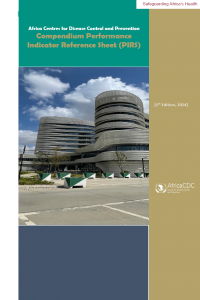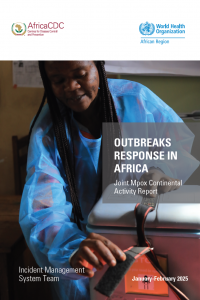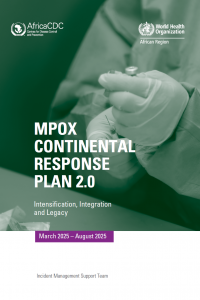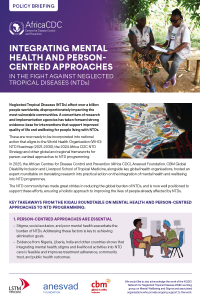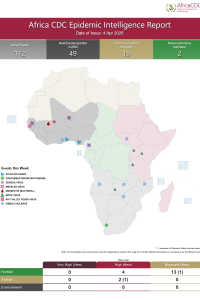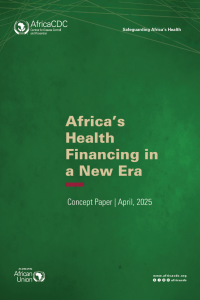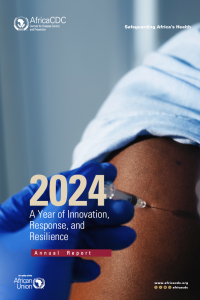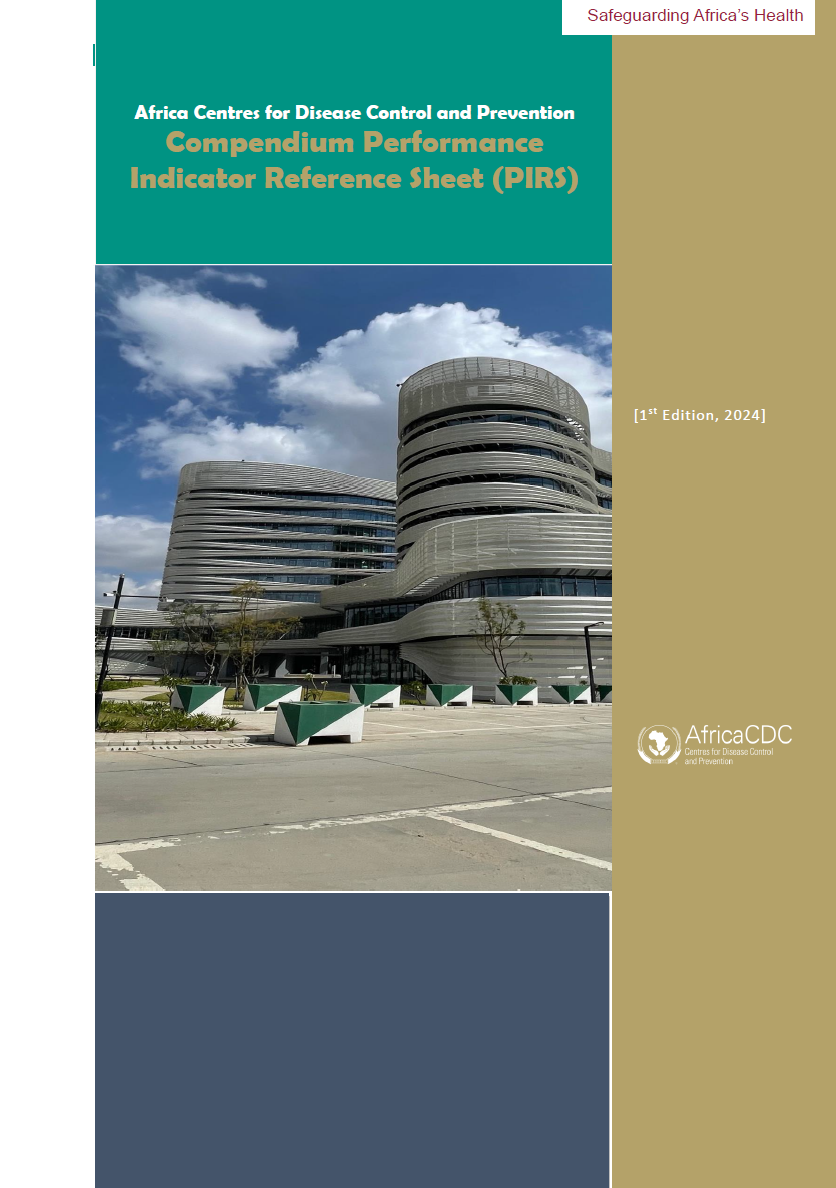
- Version
- Download 19
- File Size 1.12 MB
- File Count 1
- Create Date 10 September 2024
- Last Updated 29 April 2025
Result Matrix, September 2024
1. BACKGROUND
The Africa CDC Compendium of Performance Indicator Reference Sheets (PIRS) is a comprehensive handbook introduced in April 2024. It serves as a high-level technical guide, setting out clear, SMART (Specific, Measurable, Achievable, Relevant, Time-bound) indicators to systematically track progress and measure achievements under the Africa CDC Strategic Plan 2023–2027. This Strategic Plan outlines six priority areas, including integrated health systems, disease surveillance, emergency preparedness and response, and laboratory systems strengthening, and is anchored by seven enablers, notably public health workforce development, health financing and partnerships etc.
The PIRS is firmly aligned with Africa CDC’s broader continental commitments under the New Public Health Order, including the African Union Agenda 2063, the Africa Health Strategy 2016–2030, and health systems strengthening under global health targets. Africa CDC champions a New Public Health Order that calls for “a fundamental shift towards an equitable and just public health landscape, underpinned by strong, resilient, and self-reliant health systems before, during, and after public health crises.”
Africa CDC requires robust, evidence-based indicators that accurately reflect progress toward the Strategic Plan’s targets and objectives to support effective programme implementation, performance monitoring, and accountability. The indicators in this compendium are carefully aligned with Africa CDC’s unified Monitoring & Evaluation (M&E) Framework and Results-Based Accountability (RBA) system. They are structured to mirror the Strategic Plan’s priorities, goals, and objectives, thus providing sufficient granularity to track organisational performance, measure outcomes, inform evidence-based advocacy, and contribute to the broader continental health security agenda.
This PIRS represents the outcome of an extensive technical development process, involving indicator review, stakeholder consultations, strategic alignment, and harmonization with regional and global monitoring standards. The document presents the selected indicators, offers standardised definitions, and provides detailed guidance on data sources, measurement methodologies, reporting frequencies, and accountability mechanisms.
1.1 Purpose
The indicators outlined in this compendium are intended for Africa CDC BUS, donors, Member States, Regional Economic Communities (RECS), and implementing partners to assess progress across continental initiatives, flagship programmes, and strategic interventions. They provide a framework for measuring the implementation of the Africa CDC Strategic Plan 2023–2027 targets. Business Units are encouraged to integrate these indicators into their ongoing programmatic monitoring efforts and to report comprehensive continental, regional, and national data through Africa CDC’s Results-Based Accountability (RBA) processes.
Through this systematised approach, Africa CDC will be able to measure and demonstrate its contributions and attribution in strengthening continental and global health security, enhancing local manufacturing capacity, advancing health systems strengthening across all 55 African Union (AU) Member States, and supporting Africa’s response to public health emergencies and many among others. Progress tracked through these indicators will also directly inform Africa CDC’s accountability to commitments made under the AU Agenda 2063, the Political Declaration on the Abuja Call to Action, the Lusaka Call to Action, and the Sustainable Development Goals (SDGS).
The PIRS Compendium is an important matrix for defining, measuring, tracking, and monitoring performance against Africa CDC’s strategic objectives. Its purpose is to ensure that all stakeholders working with or supporting Africa CDC have a clear and consistent understanding of each performance indicator, how it is defined, how it links to the Strategic Plan’s goals and objectives, how it should be measured, and how it contributes to continental health priorities.
Each indicator is accompanied by detailed guidance, covering:
- Clear definition, rational,
- Data collection methodologies,
- Data analysis approaches,
- Reporting frequencies and timelines,
- Identified data sources,
- Roles and responsibilities for data collection, reporting, validation, and use.
This ensures standardised, high-quality, and comparable reporting across Business Units, Member States, Regional Economic Communities (RECS), and Regional Coordinating Centres (RCCS) while recognising the unique contexts and capacities across different countries and sectors. Indicators are also designed to facilitate data aggregation at the continental level for Africa CDC’s performance reviews, knowledge products, and policy advocacy. Through these indicators and their systematic application within the Strategic Plan’s Monitoring and Evaluation Framework, Africa CDC will be able to monitor progress, evaluate impact, inform strategic adjustments, and promote evidence-based decision-making using RBA approaches. In doing so, Africa CDC advances its leadership role in institutionalising continuous learning and improvement, and in reinforcing accountability mechanisms and transparency across its programmes and partnerships.
The Division of Planning, Reporting and Accountability (PR&A) leads the coordination of indicator harmonization efforts across all Africa CDC Business Units, working closely with technical divisions, regional offices, and implementing partners. This process is further supported by the Programme Delivery Committee (PDC) under the Executive Office, which oversees and validates the selection, alignment, and quality assurance of indicators in line with Africa CDC’s organisational, continental, and international standards.
The PDC plays a key role in the annual review and refinement of indicators, ensuring they remain relevant, high-quality, and fit for purpose as Africa CDC’s programmes evolve. The decisions and benchmarks established by the PDC will serve as institutional references for the continuous strengthening of Africa CDC’s internal accountability systems, strategic learning agenda, and performance management processes.
Attached Files
| File | Action |
|---|---|
| Result Matrix, September 2024 — Updated on 2025-04-28 | Download |

